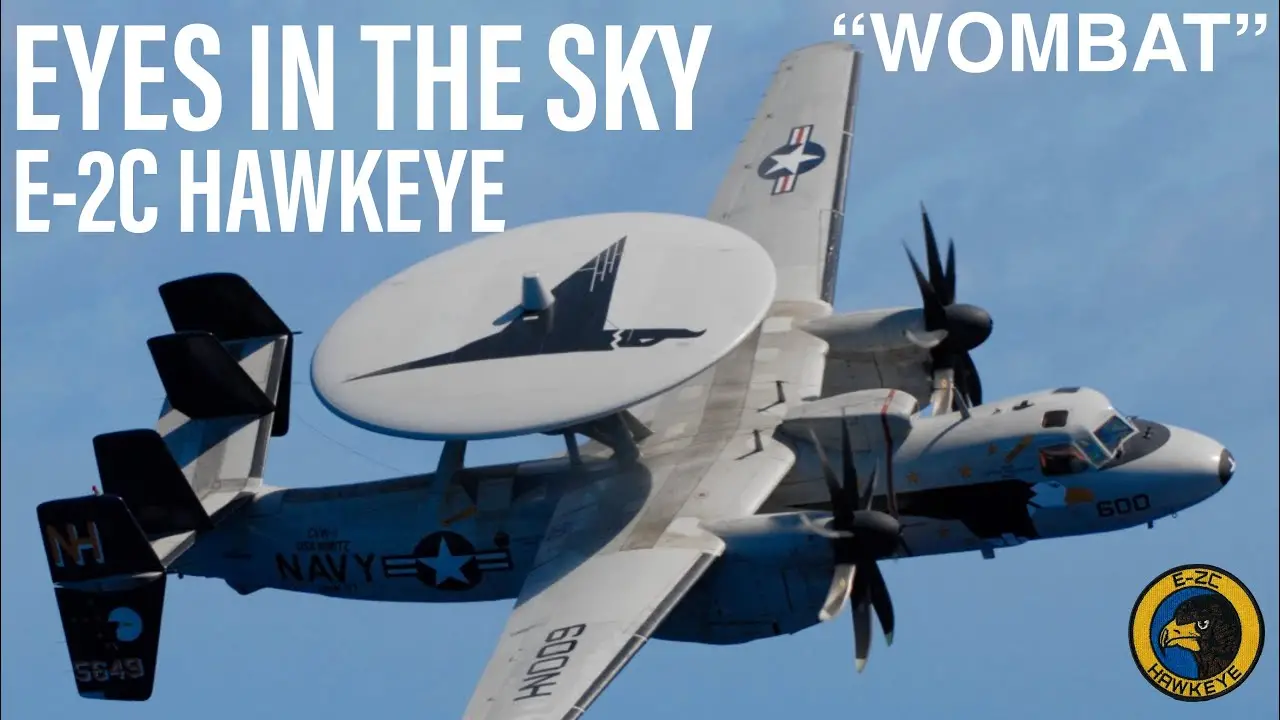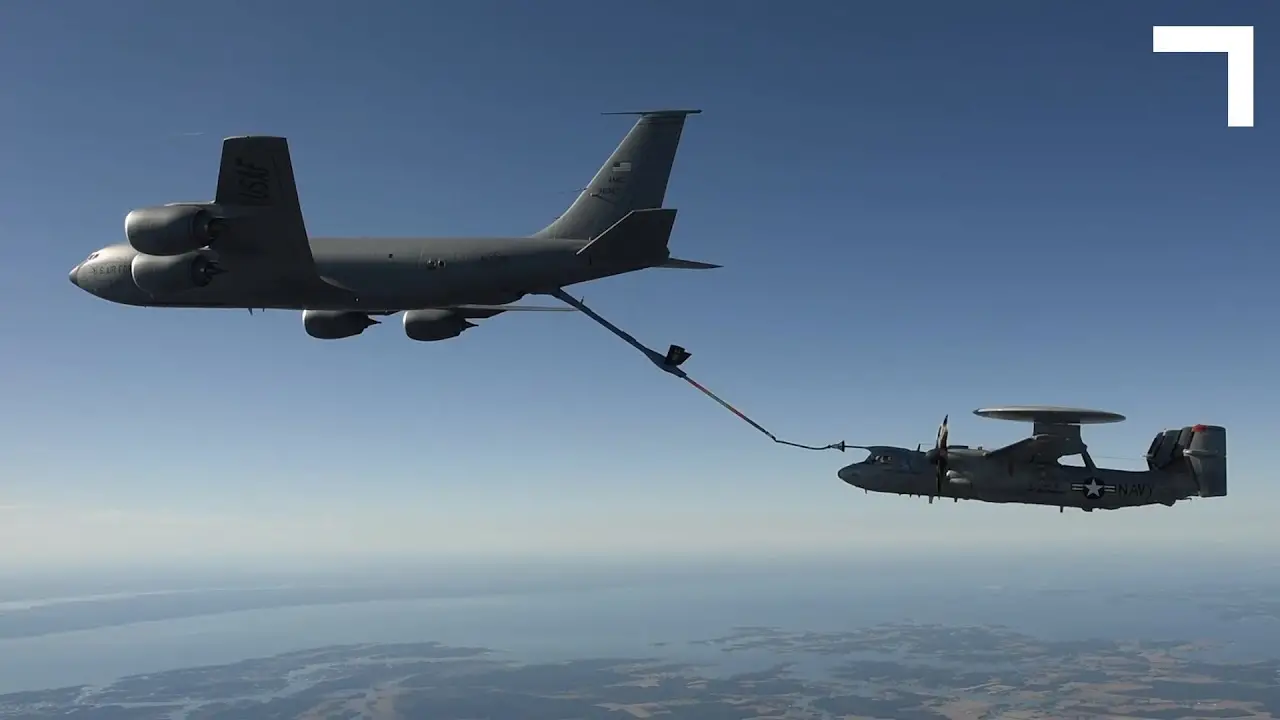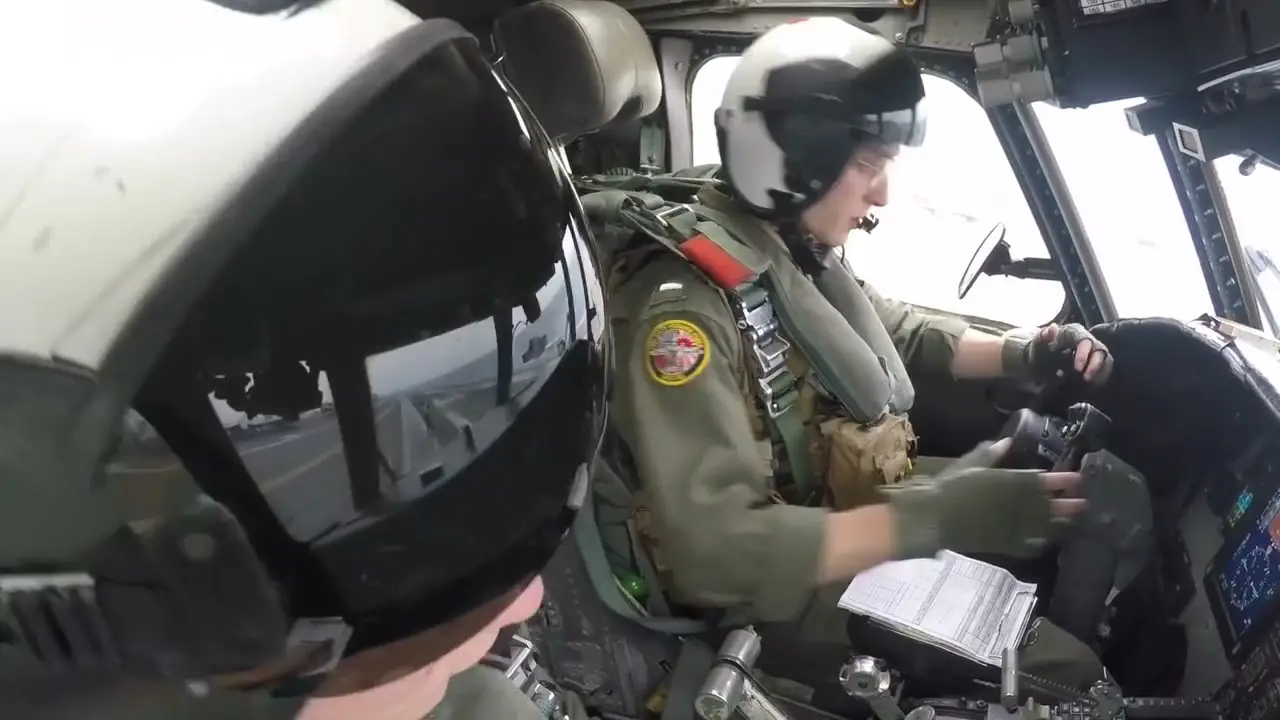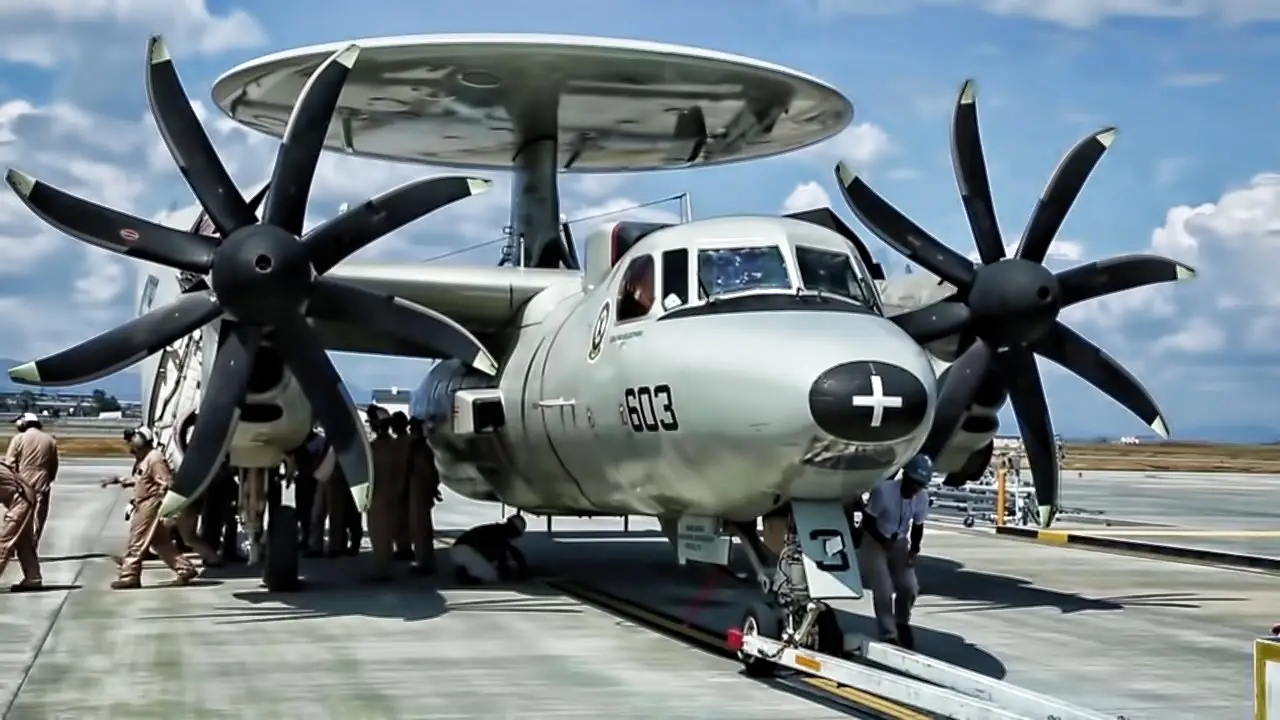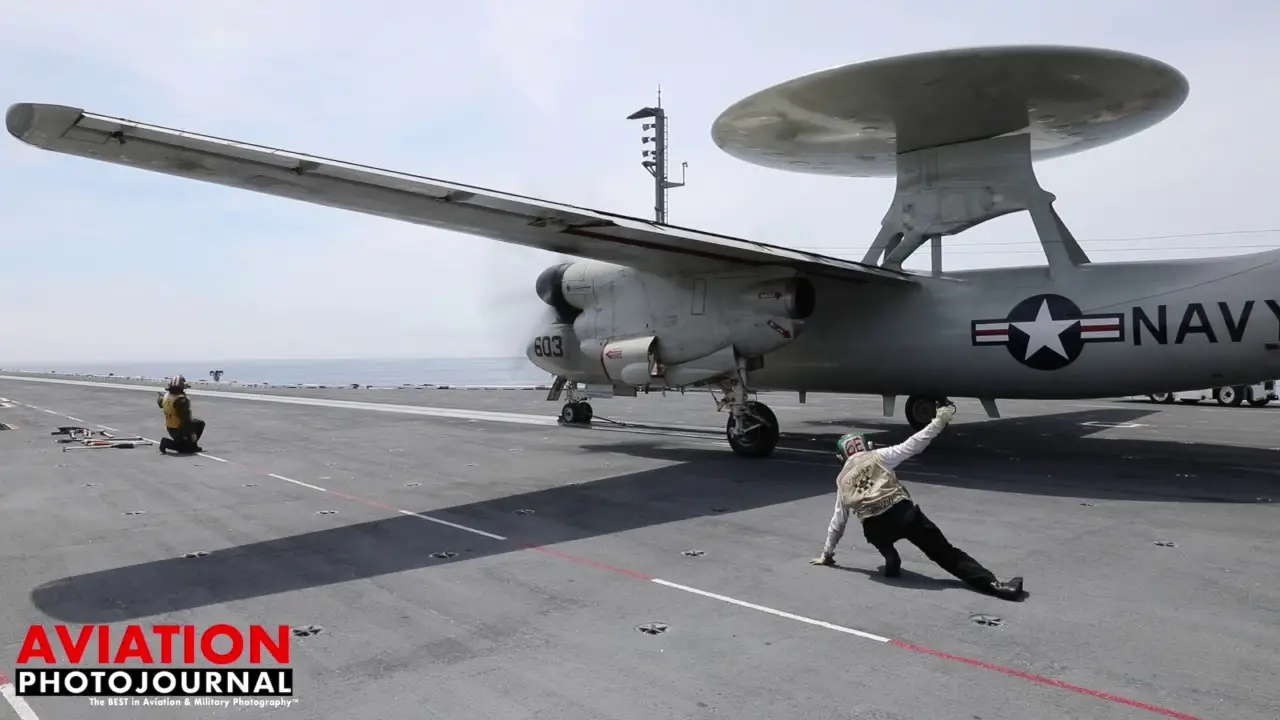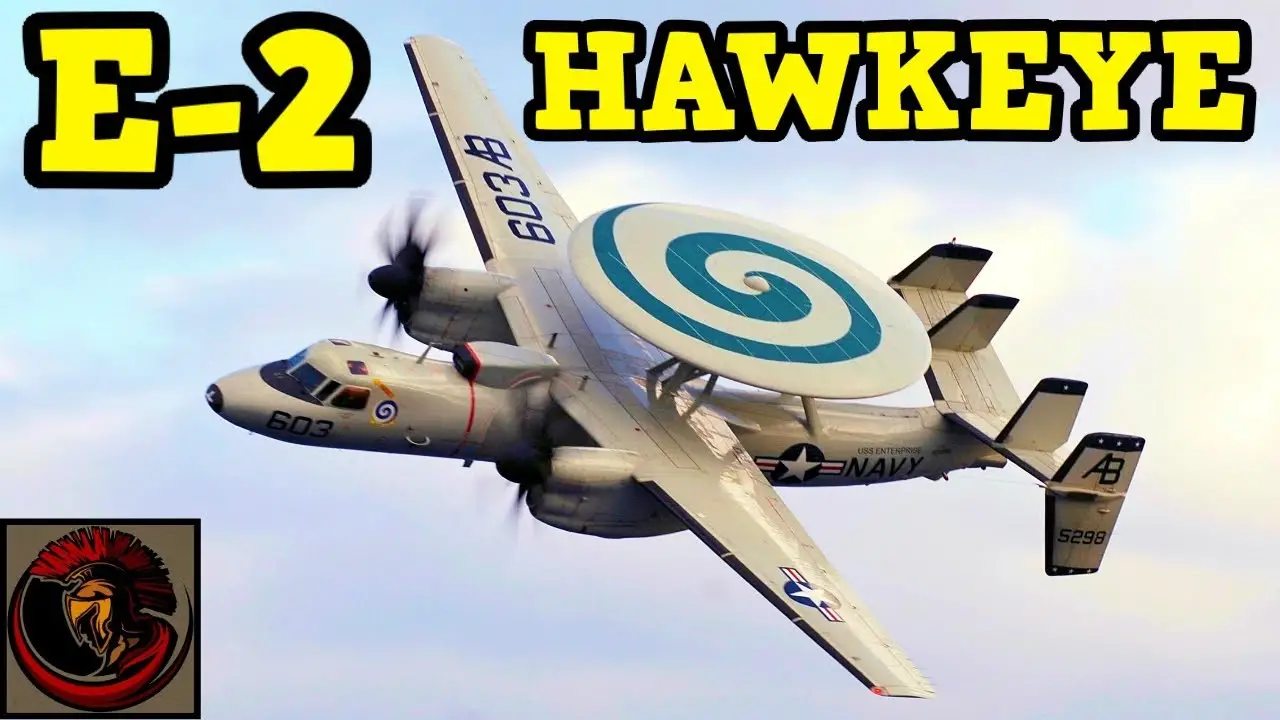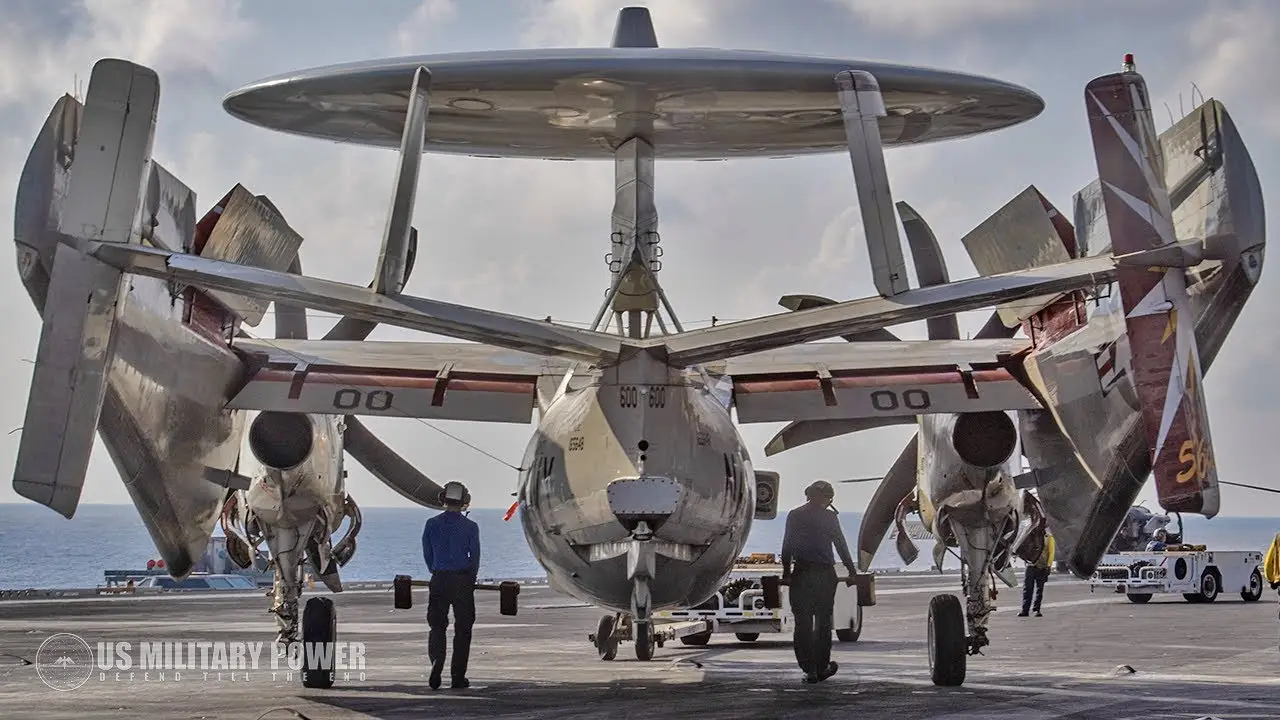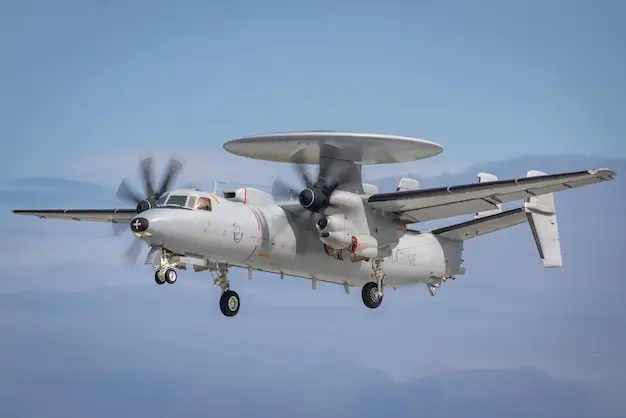E2 Hawkeye The History, Design, Capabilities, and Future of the Airborne Early Warning Aircraft
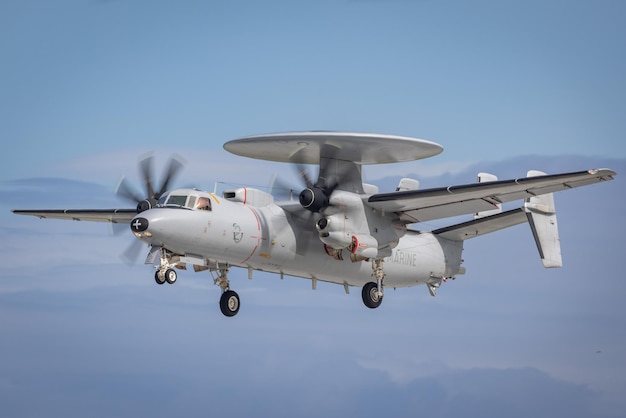
The E2 Hawkeye is a vital aircraft in the United States Navy’s arsenal, providing crucial early warning capabilities for naval operations. This airborne early warning aircraft has a long history dating back to the 1960s and has undergone several upgrades and advancements over the years. In this blog post, we will delve into the history, design, capabilities, and future of the E2 Hawkeye, highlighting its importance in military operations.
Introduction to E2 Hawkeye
The E2 Hawkeye is an all-weather, carrier-based tactical airborne early warning (AEW) aircraft designed and manufactured by Northrop Grumman. It is primarily used by the United States Navy for surveillance, command and control, and early warning missions. The E2 Hawkeye is known for its distinctive radar dome mounted on top of its fuselage, earning it the nickname “the Hummer” among pilots.
The E2 Hawkeye is a critical component of the Navy’s Carrier Strike Group, providing real-time situational awareness and command and control capabilities. It is also used for search and rescue operations, drug interdiction, and disaster relief efforts. With its advanced radar system and communication capabilities, the E2 Hawkeye plays a crucial role in protecting the fleet and ensuring the success of naval operations.
History of E2 Hawkeye
The development of the E2 Hawkeye began in the late 1950s when the United States Navy recognized the need for an airborne early warning aircraft to replace the aging E1 Tracer. In 1960, Northrop Grumman was awarded the contract to develop the E2 Hawkeye, and the first prototype flew in 1961. The E2 Hawkeye officially entered service in 1964 and has been in continuous production ever since.
Over the years, the E2 Hawkeye has undergone several upgrades and advancements to keep up with changing technology and evolving threats. In the 1970s, the E2C variant was introduced, featuring improved radar and communication systems. The E2D Advanced Hawkeye, the most recent variant, was introduced in 2010 and includes a new radar system, improved engines, and upgraded avionics.
Design and Specifications of E2 Hawkeye
The E2 Hawkeye has a unique design that sets it apart from other military aircraft. Its most distinctive feature is the large rotating radar dome mounted on top of its fuselage. This dome houses the AN/APS-145 radar system, which provides 360-degree coverage and can track multiple targets simultaneously.
The E2 Hawkeye has a length of 57 feet, a wingspan of 80 feet, and a height of 18 feet. It has a maximum takeoff weight of 57,500 pounds and can reach a top speed of 350 knots. The aircraft has a range of over 2,000 nautical miles and can stay airborne for up to six hours without refueling.
E2 Hawkeye’s Role in the Military
The E2 Hawkeye plays a crucial role in the United States Navy’s operations, providing early warning and command and control capabilities. Its primary mission is to detect and track incoming enemy aircraft and missiles, allowing the Navy to respond quickly and effectively. The E2 Hawkeye also serves as a communications hub, relaying information between ships, aircraft, and ground stations.
In addition to its AEW capabilities, the E2 Hawkeye is also used for surveillance and reconnaissance missions. Its advanced radar system allows it to monitor large areas of the ocean and provide real-time situational awareness to commanders. The E2 Hawkeye is also equipped with a variety of sensors and cameras, making it a valuable asset for intelligence gathering.
Notable Features of E2 Hawkeye
The E2 Hawkeye has several notable features that make it a unique and highly capable aircraft. Its AN/APS-145 radar system is one of its most significant assets, providing long-range detection and tracking capabilities. The E2 Hawkeye also has an advanced Identification Friend or Foe (IFF) system, allowing it to identify friendly and enemy aircraft.
Another notable feature of the E2 Hawkeye is its ability to operate from aircraft carriers. This requires precise flying skills and specialized training, making the pilots of the E2 Hawkeye among the most skilled in the Navy. The aircraft is also equipped with folding wings, allowing it to be stored on the carrier’s deck when not in use.
E2 Hawkeye’s Combat Capabilities
The E2 Hawkeye may not be a fighter jet, but it plays a crucial role in combat operations. Its early warning capabilities allow it to detect and track incoming threats, giving commanders time to respond and deploy defensive measures. The E2 Hawkeye can also coordinate with other aircraft and ships, providing a comprehensive picture of the battlefield.
In addition to its AEW capabilities, the E2 Hawkeye can also carry out offensive missions. It is equipped with a variety of weapons, including air-to-air missiles, anti-ship missiles, and precision-guided bombs. The E2 Hawkeye can also serve as a tanker, refueling other aircraft during long-range missions.
E2 Hawkeye vs Other Military Aircrafts
The E2 Hawkeye may not be as well-known as other military aircraft such as the F-16 or F-35, but it is just as important in naval operations. Its unique design and capabilities set it apart from other aircraft, making it a valuable asset in the Navy’s arsenal. The E2 Hawkeye’s primary role as an early warning and command and control aircraft also makes it a crucial component of the Carrier Strike Group.
Compared to other AEW aircraft, such as the Boeing E-3 Sentry or the Saab 340 AEWC, the E2 Hawkeye has a smaller radar range and payload capacity. However, its ability to operate from aircraft carriers gives it a significant advantage in naval operations. The E2 Hawkeye is also more maneuverable and can fly at lower altitudes, providing better coverage for ships and ground forces.
E2 Hawkeye’s Importance in Naval Operations
The E2 Hawkeye’s importance in naval operations cannot be overstated. Its early warning capabilities allow the Navy to detect and track potential threats, giving commanders time to respond and deploy defensive measures. This is especially crucial in today’s modern warfare, where threats can come from land, air, and sea.
The E2 Hawkeye also plays a vital role in coordinating and communicating with other aircraft and ships. Its advanced communication systems allow it to serve as a command and control center, providing real-time situational awareness to commanders. This is essential in complex naval operations, where coordination and communication are key to success.
Future of E2 Hawkeye
As technology continues to advance, so does the E2 Hawkeye. The latest variant, the E2D Advanced Hawkeye, features several upgrades and advancements, including a new radar system, improved engines, and upgraded avionics. This allows the E2 Hawkeye to stay ahead of evolving threats and continue to provide critical early warning capabilities for the Navy.
In the future, the E2 Hawkeye is expected to undergo further upgrades and advancements, ensuring its relevance and effectiveness in modern warfare. There have been talks of developing a stealth version of the E2 Hawkeye, which would make it even more difficult for enemies to detect and track. This would further enhance its capabilities and solidify its role as a vital asset in naval operations.
Conclusion: The Impact of E2 Hawkeye on Military Operations
In conclusion, the E2 Hawkeye has played a crucial role in military operations since its introduction in the 1960s. Its advanced radar system, communication capabilities, and unique design make it a valuable asset for the United States Navy. The E2 Hawkeye’s early warning and command and control capabilities have proven to be essential in protecting the fleet and ensuring the success of naval operations. With continuous upgrades and advancements, the E2 Hawkeye will continue to play a vital role in modern warfare and remain a cornerstone of the Navy’s Carrier Strike Group.

